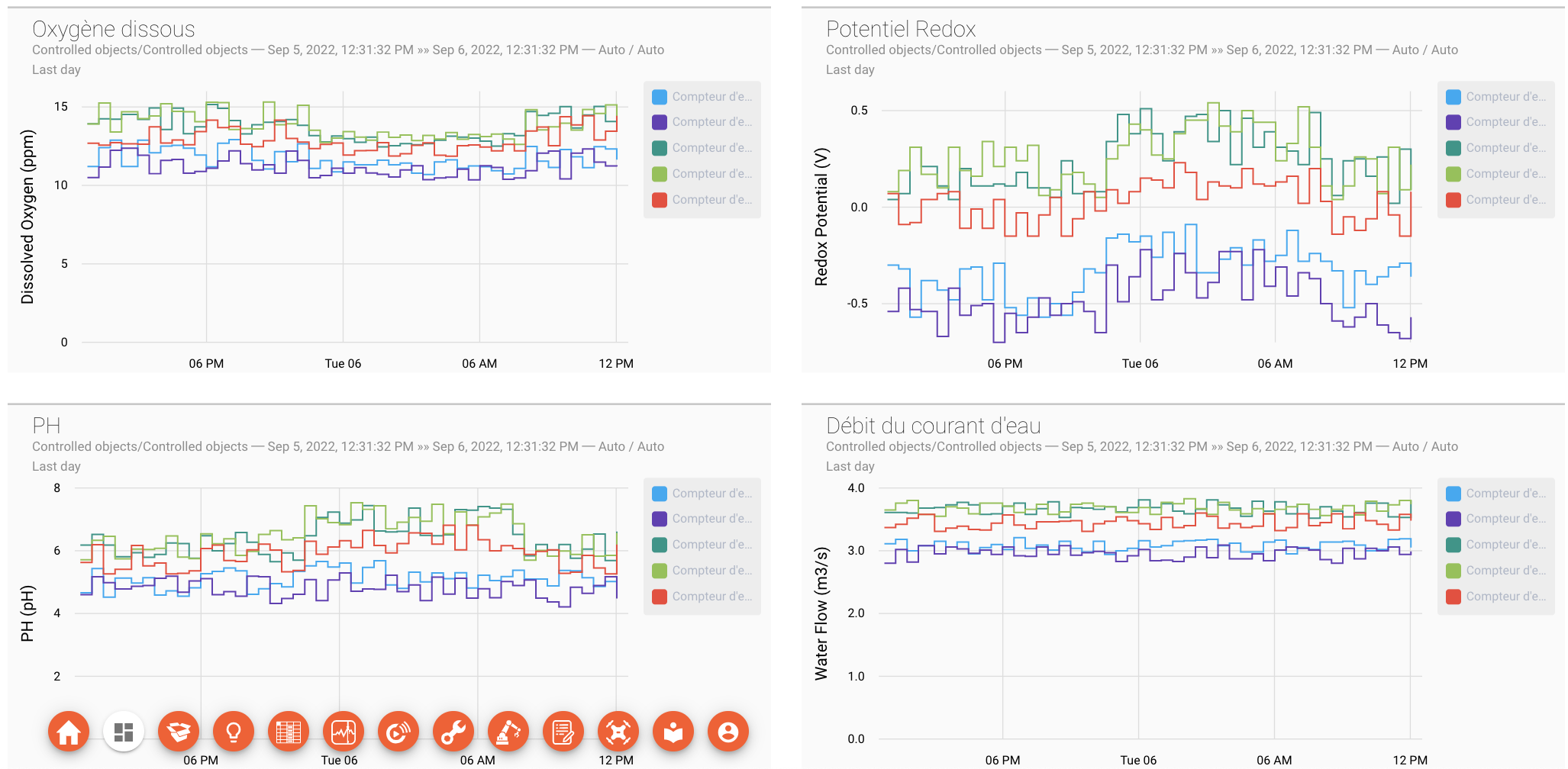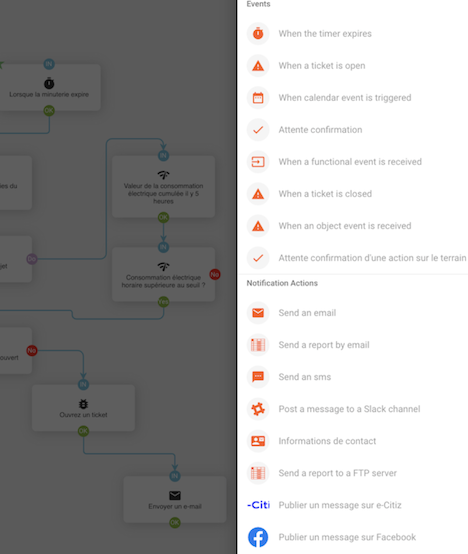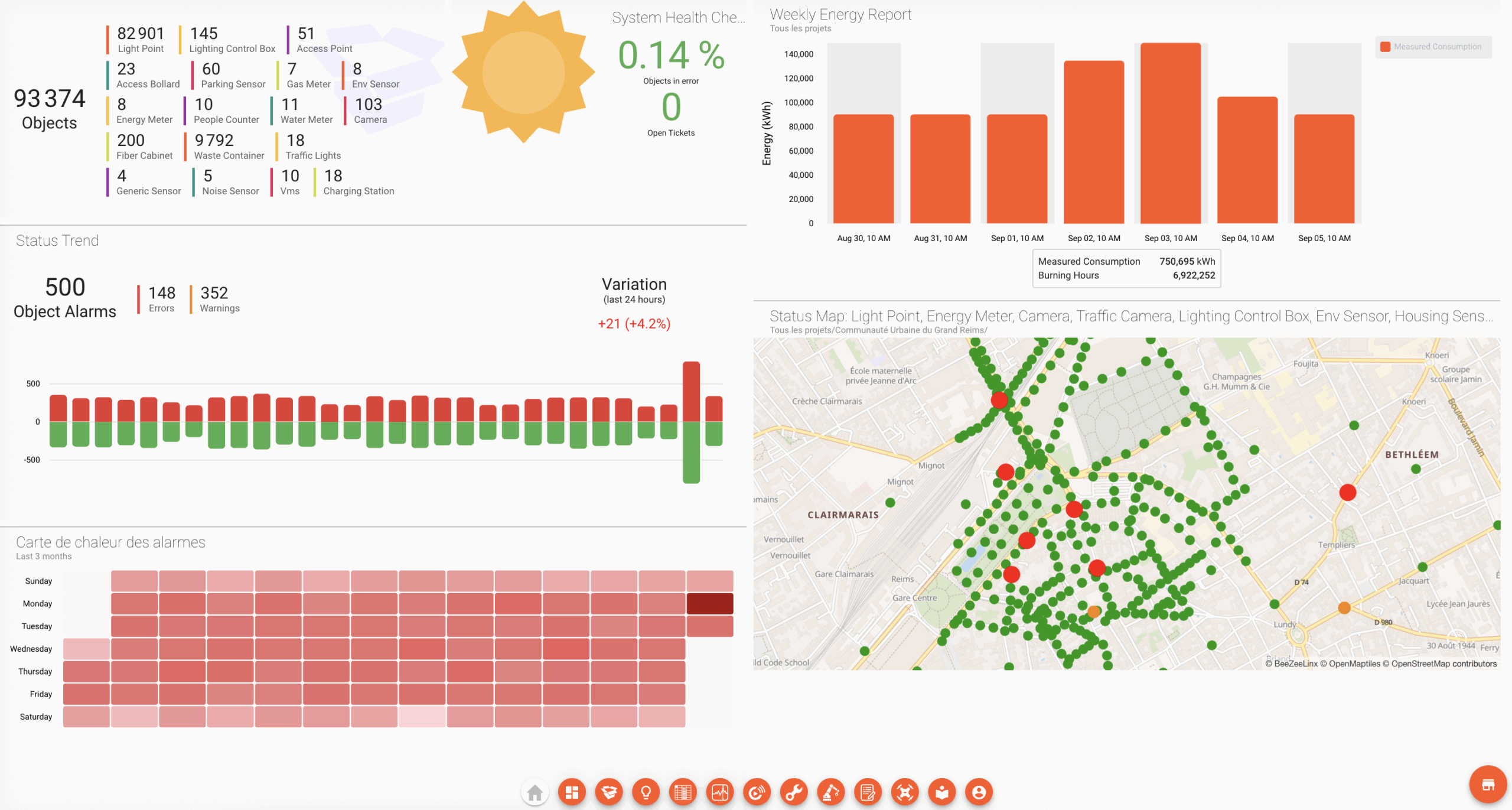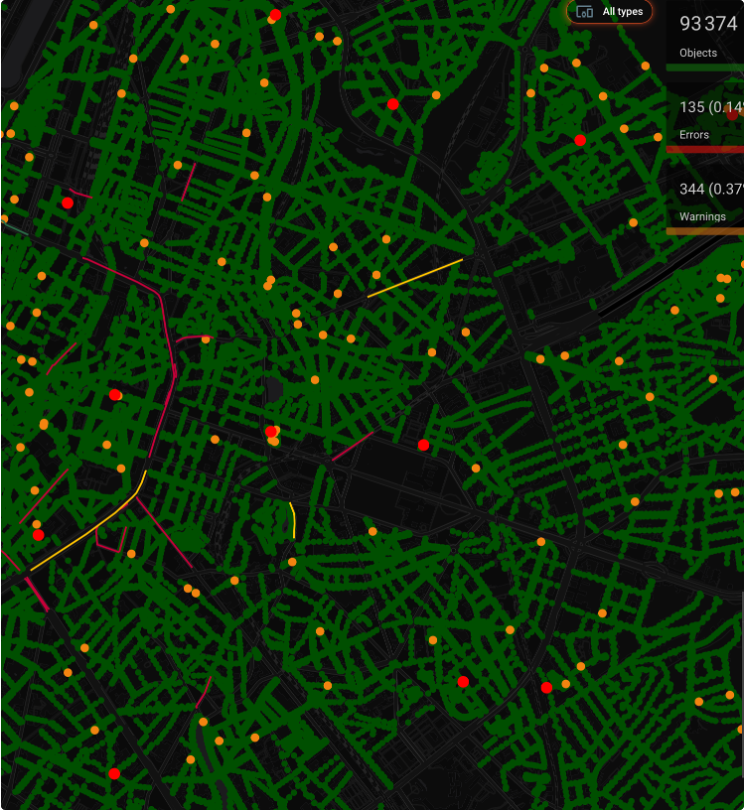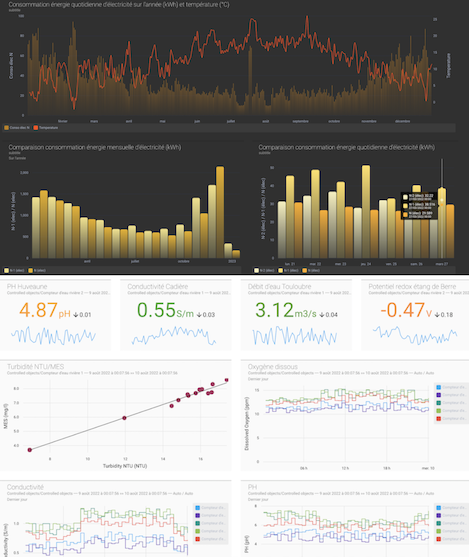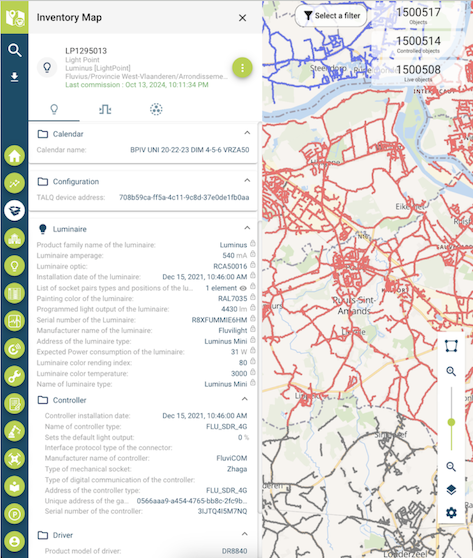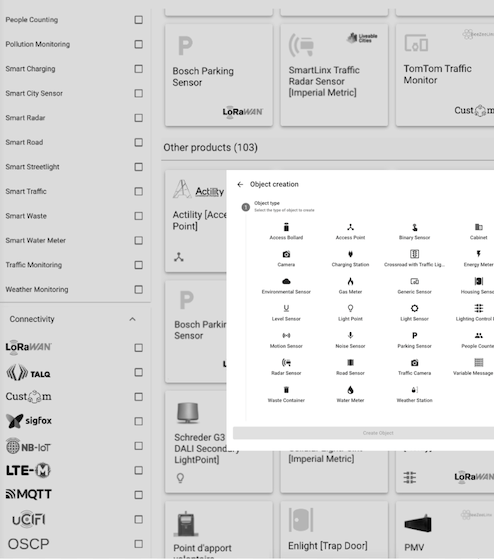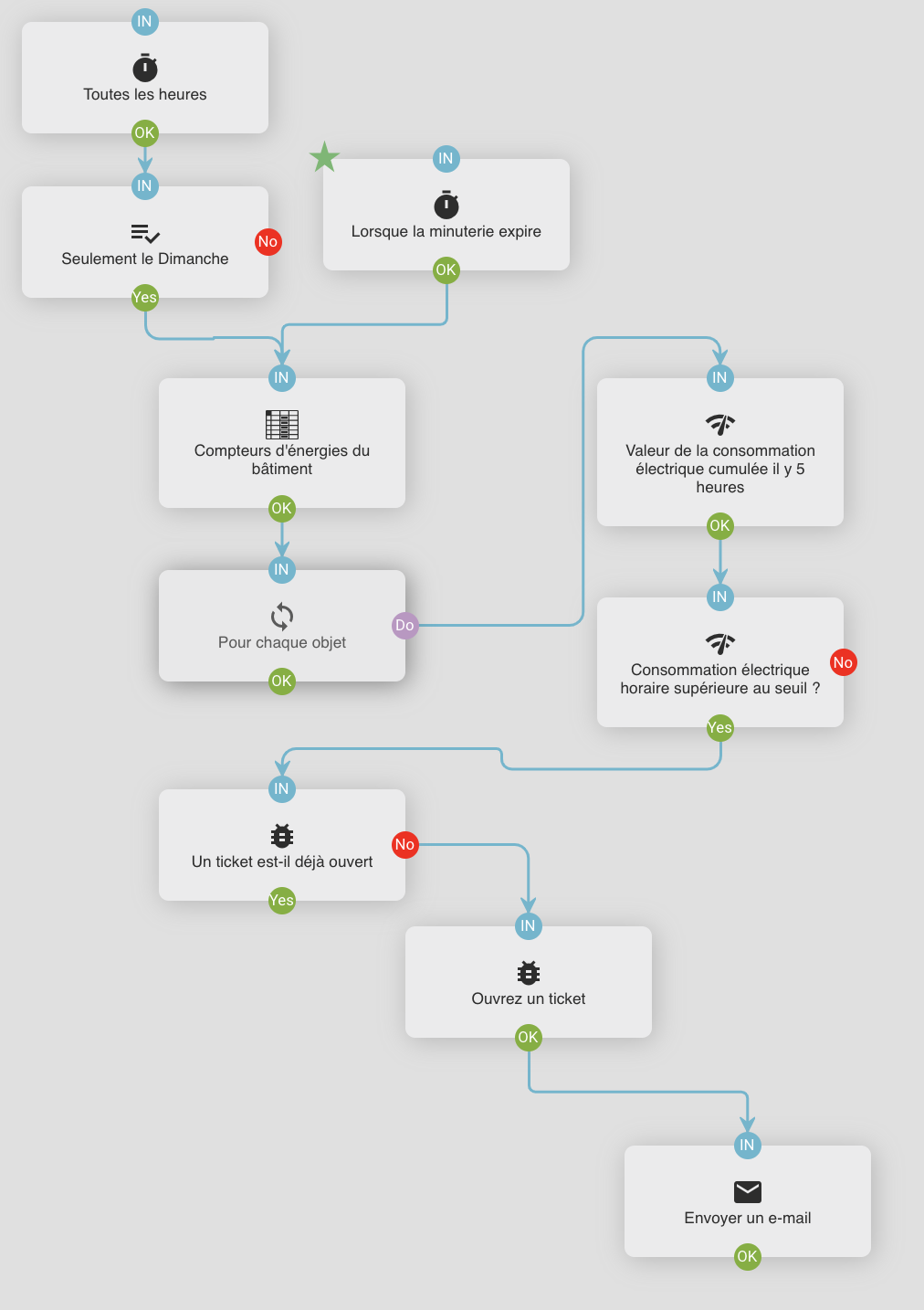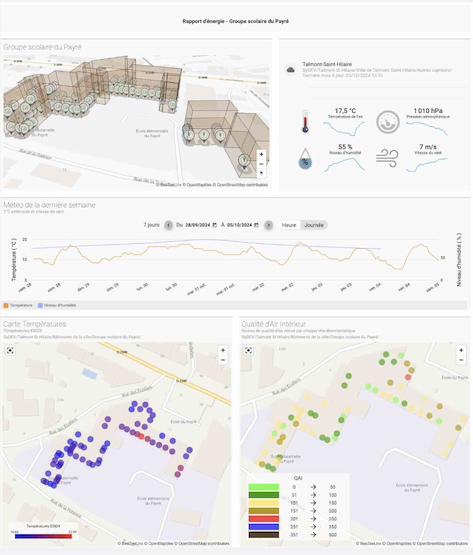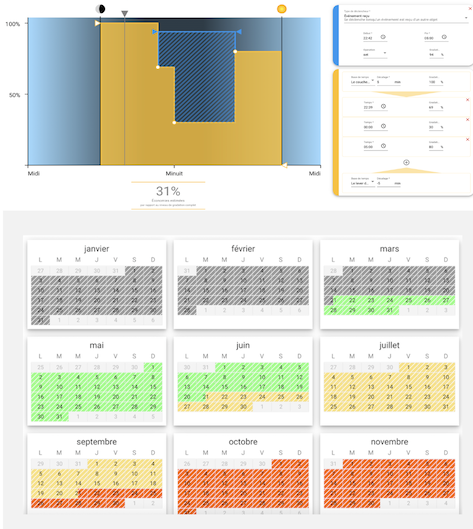The most advanced IoT Platform
Citylinx connects to any device (sensors, actuators, controllers, gateways, …), to any city system (Geographical Information System, Maintenance System, Inventory Management, Traffic Control, Video Surveillance Cameras, …) and to any external data source (traffic data flow, weather forecast, …) to collect data, to control assets & systems and to automate city processes.
- Bidirectional communications: upstream & downstream
- Deployed & scalable to millions of connected devices
- Multi-network, multi-protocol, multi data-model
- Highest cyber security features embedded
- Data management & governance
Some of our key features
Dynamic & Customizable Data Model
Many object & asset types available for outdoor lighting (luminaires, luminaire controllers, cabinet controllers, activity sensors, photocells), traffic counting, parking guidance (spots, zones, groups, panels), city information panels, building (buildings, floors, zones, rooms), occupancy, air quality, noise, building efficiency, solar production, weather, street maintenance, electrical cabinets, safety sensors and more.
Thousands of supported IoT devices
Citylinx enables you to import your own decoder/encoder to support any sensor, controller and actuator. It already supports thousands of connected devices from more than 50 hardware and communication suppliers.
Multi-Protocol & Network
Citylinx connects to all LoRaWAN Network Server. It supports NB-IoT devices through UDP and any IP-based communication via Webhooks, REST API and SOAP. It supports multiple other IoT networks such as Zigbee, XBee, Itron and Wirepas amongst others.
Integration of City & Utility Systems
Citylinx is connected to utility metering data services such as ENEDIS, BIRDZ from Veolia and SUEZ, to identify energy waste and water leaks in your public buildings.
Full TALQ Compliancy, Fiware, MQTT and more
With 121 TALQ test cases supported and tested with 22 suppliers of outdoor lighting systems, Citylinx is considered the most advanced TALQ-compliant Central Management Software on the market. Citylinx also supports all devices using the MQTT or Fiware NGSI protocols.
Live Data Sources
Citylinx is connected to live data sources in your country including real time weather forecast and traffic information from multiple providers.
Data Governance Platform
Data governance is at the heart of Citylinx. It provides a rule engine to augment incoming collected data to create new contextualized additional data and store them, to add intelligence to the raw data produced by the end-devices.

